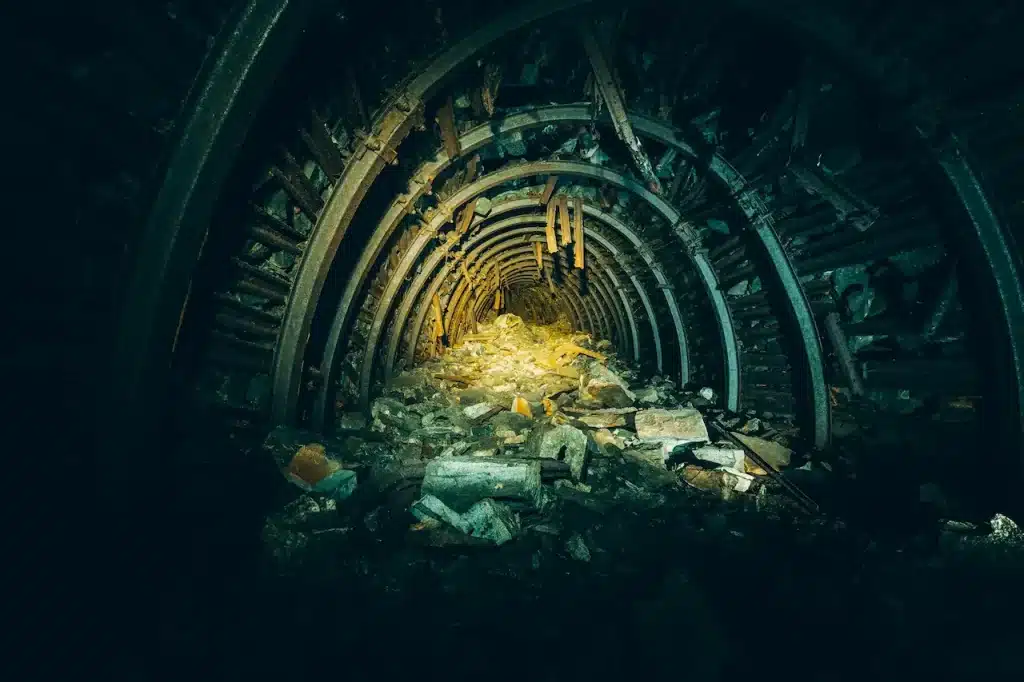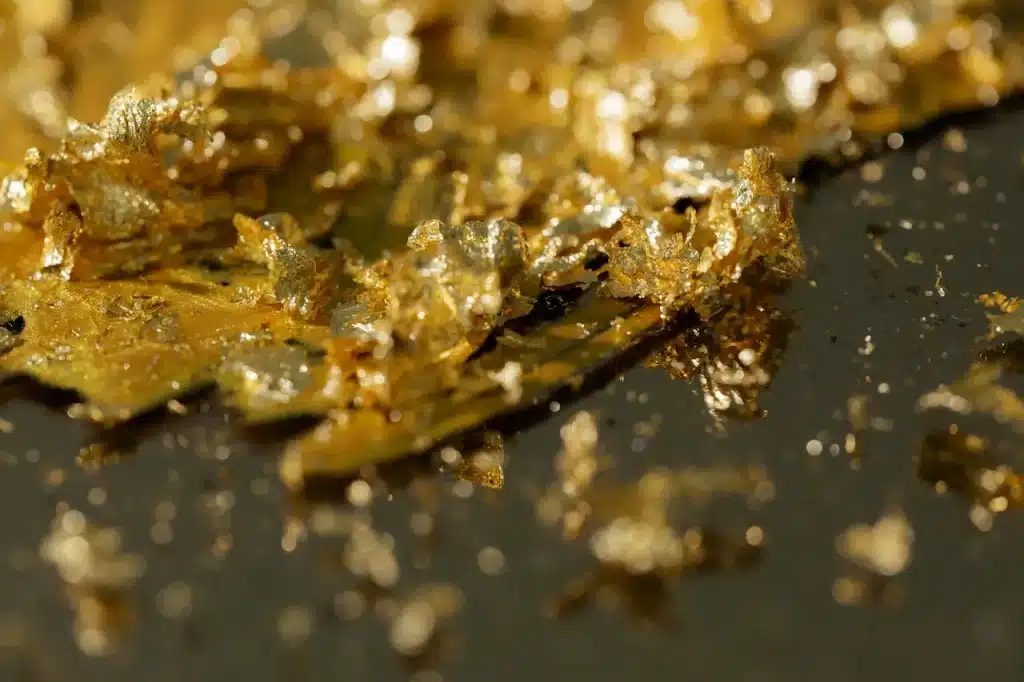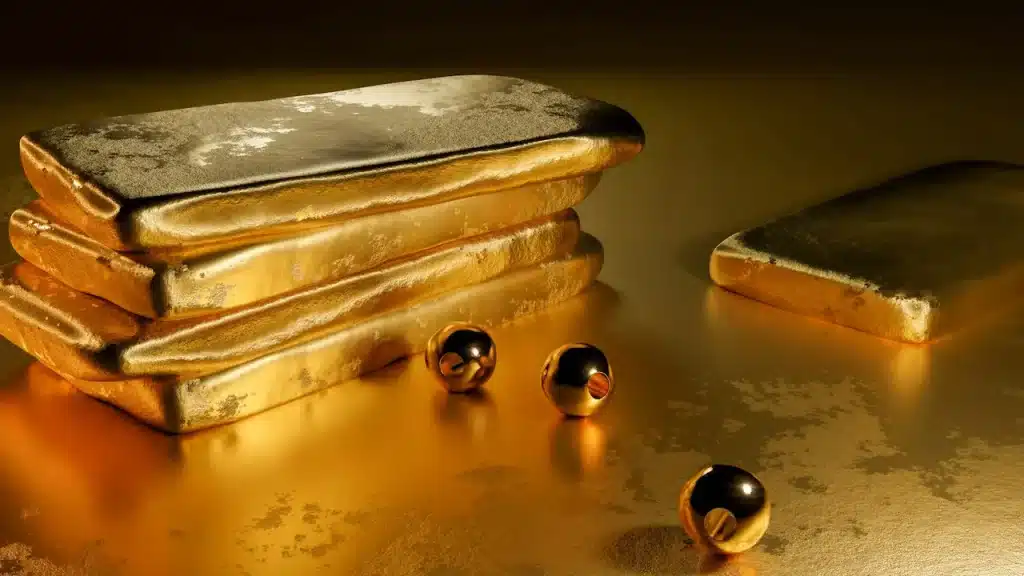Imagine a misty, damp morning in rural England. As the sun slowly rises above the rolling hills, you hit something unexpected. A soft, resonating thunk that resonates not only through the soil, but also into the heart of history. You remove centuries of soil to reveal a cluster of gold artifacts that have remained untouched for hundreds of years.
The discovery of “lost” gold is more than a mere treasure. It is a window into England’s Dark Ages. This was a period that saw the violent fall of Roman rule, but from its wreckage grew the roots of Britain today its art, language and faith.
Uncovering the Mystery
The soil is trembling
The air is transformed the moment the digger’s knife strikes the metal. These are not just coins or pieces of jewellery, but survivors from empires, rebellions, faith and flight. The gold was not meant to be discovered; it was buried because someone fled violence, was fleeing, and hoped to return. Perhaps they died before they were able to reclaim the gold. Maybe their memory was lost, but the gold remained.
This silent concealment says volumes. Families buried valuables under the rubble of Viking raids and local feuds. They hoped, prayed, and saved for a future that none of them would see. The earth was their vault, and the vaults were our telltale whispers about a world gone wrong.

The Broken Empire
The Romans’ withdrawal from Britain at the beginning of the 5th century unleashed freedom and fragmentation. Without the stabilising Pax Romana thread, kingdoms rose, fell, raiders invaded, livelihoods were shattered and oral traditions scrambled to be preserved among scattered communities.
Even in the ruins of ancient civilisations, life continued. Monks worked by candlelight in hidden clearings of villages, transcribing Latin text and composing illuminated documents. In the quiet corners, pagan symbols and Christian symbolism met in stone circles shaded by trees or megalithic graves. This led to new iconography that was later used in art.
Language was fluid. Old English was formed when the tongues of Angles and Saxons, Jutes and Britons mingled.
Gold That Speaks
Metallic Threads in Tapestry
The hoard’s contents are less important than its symbolism. The intricate patterns on the hilt of a sword. Brooch with spirals that resemble Celtic stonework. Stamped coins with rulers that are half-forgotten. The fusion of Celtic and Germanic themes is a numinous moment. The gold glint, so persistent and personal, anchors us to the individuals who have long been forgotten by time.
Imagine picking one of these items up and tracing with your finger the swirling design. The touch of the craftsman, hundreds of years ago, is still felt. Golden wire was hammered into place and twisted. This artist, whoever he was, probably put down his tools and stood to admire a work that seemed sacred even back then.
Rosetta Stone: Faith and Culture
Christianity did not arrive with a slick, obvious proclamation. It incorporated existing patterns – the old Celtic designs and knots became crosses, and brooches merged pagan spirals with Christian iconography. With its durability and lustre, it became a sign of divine illumination and earthly status.
The mixed styles of the hoard suggest a transitional society, negotiating with its past and wrestling to open up to the future. This is a point of convergence between Celtic paganism, early Christianity and a kind of conversation. This dialogue changed art, religion, burial practices, and society.
From Dark Ages to Dawn
The Birth of a Language
Old English was born from dialect clashes, just as gold shines. Anglo-Saxon settlers introduced their language. Native Britons kept their own. Mix, merge, contort, adopt. Words travelled in villages and markets. Borrowing from Norse and Celtic, they combined new expressions in unexpected ways. The English language was born, with its pragmatic, spare structure and an ear for borrowing.
You can hear different voices in every word: “king” from Old English cyning; “church” from Old English cirice via Greek kyriakon; “field,” feld.
This language was carried forward by every storytelling tradition, whether it be in runic stones, illuminated manuscripts, or oral sagas. When you look at that brooch in gold, phrases like “whence we came” or “earls of the land” will come to mind. These are sonorous phrases that were formed from war and religion.

Art in Transition
Celtic art, with its spirals, knots and patterns, had been a part of culture for centuries. Around this time, it started to change. Christian influence brought geometrical order, figural depiction, and biblical narration to the art. In the Lindisfarne Gospels and Book of Kells, you can see monks’ hands combining pagan patterns with the evangel message.
In that gold hour, you can see early manifestations of this shift. Ring with Celtic swirls and a faint cross motif. The stem of a clasp that looks more like a vine rather than a spear is a good example. Each decorative element is a signal: “Here culture meets conversion.”
Christianity’s Quiet Conquest
Christianity did not sweep across the globe with armies in shining chainmail. It was more subtle, and it took place through quiet persuasion. As Christian relics, gold, which was valued in pagan contexts (buried with chieftains and enshrined on burial mounds), gained a new level of sanctity.
Even if they were buried in panic, the items of the hoard could have been used as temple offerings or for church purposes. When a new church opened decades later, the fragments could have been recast as crosses, chalices or reliquaries, or used to make coins.
Human Stories in the Dirt
The Hider
Think about the person who buried it. Perhaps a farmer who doubled as a fighter clutched a few of his treasured pieces while raiders rampaged. He may have repurposed the gold from an old reliquary that was once used to decorate holy relics. Or maybe he was a devoted monk who was desperate to protect valuables from marauders.
He may have dug a pit in the moonlight while trembling. Perhaps he took a moment to pray, “May this land remain safe until peace returns.” Then, he left, stepping into the unknown, never to be seen again.
The Finder
You may be wandering through the land, or you might be monitoring an excavation. Centuries from now, you will startle when you see a glint. When you remove dirt and discover you have struck something special. You were not prepared by a museum sign or a script. Your breath is all that’s left. You realise that you have stumbled upon the intimate, personal remains of a long-gone person.
You can document, photograph or call archaeologists. Each tool in your set becomes a dream-sifter. It peels layers of soil, revealing stories buried in the soil. You don’t just piece together dates and styles, but also emotions like terror, hope, trust, and adaptation.
Shadows Reflected in Golden
A Mirror to us
The “Dark Ages” weren’t all dark. They were just turbulent, wrenching and transformative. The words endured despite the fall of kings. Christian art has remained faithful to patterns that were once a part of pagan tradition. The gold hoard is a reminder that cultures come and go, but others are born. Faiths shift, tongues evolve, art mutates–but people endure.
In our era, we’re undergoing transformations, globalisation, digital culture, climate anxiety, and shifting identities. We also live in an uncertain world, but perhaps without the swords drawn on our walls. We metaphorically bury our valuables in emails, cloud storage and memories, hoping they will outlast the threats we feel but seldom name.

What buried treasures tell us
They reveal how people have adapted. These artifacts preserve the friction of old and new, Celtic vs. Christian. Pagan vs. Convert. Latin vs. Vernacular. This modern, polyglot and pluralistic world was born out of such collisions.
This hoard is important. Behind the artifacts, behind the glimmer and the age are real breaths full of hope, fear, and longing. The objects are alive with voices that have died. They remind us that new worlds can grow from broken ones.
Reflections on the Surface
When the dawn light catches the contours and shines on polished gold, we are reminded that time softens and memories return, sometimes through the humblest of things: pieces of metal formed by human hands.
The moment when the finder picks up a coin or brooch isn’t only archaeological. It’s like tapping the amber of time to awaken a dream. In this arena, the Dark Ages weren’t so dark. They were dynamic, multi-layered and shimmering with changes. They planted seeds of faith, language, and culture that have rooted themselves deeply in what we call England today, our stories, our languages, and our art.
Next time a historian says “Dark Ages,” smile. They weren’t that dark. Here, in the buried gold, we see proof that flickers of light can endure even during times of turmoil, and humankind can carry them forward.




